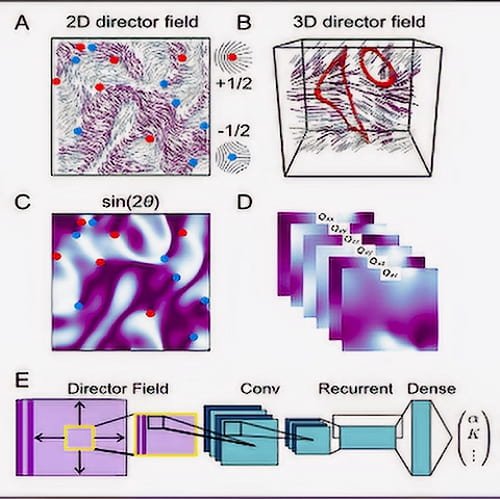Machine-learned hydrodynamic parameters in lattice Boltzmann simulations. (A and B) Nematic director fields (C and D) Representations of the director field (E) Schematic of network architecture.
Artificial intelligence holds considerable promise for transforming quantitative modeling in materials science. We illustrate this potential by developing machine-learning models of a paradigmatic class of biomaterials called active nematics. These hybrid materials can be viewed as artificial muscles composed of biological fibers and molecular motors. Here, the macroscopic coefficients characterizing energy injection by motors and material elasticity are not constant. They are unknown functions of space and time that we extract directly from experiments using neural networks. Our physics-inspired machine-learning algorithms can also forecast the evolution of these complex materials simply using image sequences from their past, without any knowledge of the governing dynamics.
Colen, et al., PNAS, 118, 10, e2016708118 (2021)
https://doi.org/10.1073/pnas.2016708118

